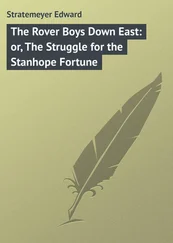Чарльз Дарвин - The Origin of Species by Means of Natural Selection Or, the Preservation of Favoured Races in the Struggle for Life
Здесь есть возможность читать онлайн «Чарльз Дарвин - The Origin of Species by Means of Natural Selection Or, the Preservation of Favoured Races in the Struggle for Life» весь текст электронной книги совершенно бесплатно (целиком полную версию без сокращений). В некоторых случаях можно слушать аудио, скачать через торрент в формате fb2 и присутствует краткое содержание. Год выпуска: 1999, Жанр: Биология, на английском языке. Описание произведения, (предисловие) а так же отзывы посетителей доступны на портале библиотеки ЛибКат.
- Название:The Origin of Species by Means of Natural Selection Or, the Preservation of Favoured Races in the Struggle for Life
- Автор:
- Жанр:
- Год:1999
- ISBN:нет данных
- Рейтинг книги:3 / 5. Голосов: 1
-
Избранное:Добавить в избранное
- Отзывы:
-
Ваша оценка:
- 60
- 1
- 2
- 3
- 4
- 5
The Origin of Species by Means of Natural Selection Or, the Preservation of Favoured Races in the Struggle for Life: краткое содержание, описание и аннотация
Предлагаем к чтению аннотацию, описание, краткое содержание или предисловие (зависит от того, что написал сам автор книги «The Origin of Species by Means of Natural Selection Or, the Preservation of Favoured Races in the Struggle for Life»). Если вы не нашли необходимую информацию о книге — напишите в комментариях, мы постараемся отыскать её.
The Origin of Species by Means of Natural Selection Or, the Preservation of Favoured Races in the Struggle for Life — читать онлайн бесплатно полную книгу (весь текст) целиком
Ниже представлен текст книги, разбитый по страницам. Система сохранения места последней прочитанной страницы, позволяет с удобством читать онлайн бесплатно книгу «The Origin of Species by Means of Natural Selection Or, the Preservation of Favoured Races in the Struggle for Life», без необходимости каждый раз заново искать на чём Вы остановились. Поставьте закладку, и сможете в любой момент перейти на страницу, на которой закончили чтение.
Интервал:
Закладка:
Practically, when naturalists are at work, they do not trouble themselves about the physiological value of the characters which they use in defining a group or in allocating any particular species. If they find a character nearly uniform, and common to a great number of forms, and not common to others, they use it as one of high value; if common to some lesser number, they use it as of subordinate value. This principle has been broadly confessed by some naturalists to be the true one; and by none more clearly than by that excellent botanist, Aug. St. Hilaire. If several trifling characters are always found in combination, though no apparent bond of connexion can be discovered between them, especial value is set on them. As in most groups of animals, important organs, such as those for propelling the blood, or for aerating it, or those for propagating the race, are found nearly uniform, they are considered as highly serviceable in classification; but in some groups all these, the most important vital organs, are found to offer characters of quite subordinate value. Thus, as Fritz Muller has lately remarked, in the same group of crustaceans, Cypridina is furnished with a heart, while in two closely allied genera, namely Cypris and Cytherea, there is no such organ; one species of Cypridina has well-developed branchiae, while another species is destitute of them.
We can see why characters derived from the embryo should be of equal importance with those derived from the adult, for a natural classification of course includes all ages. But it is by no means obvious, on the ordinary view, why the structure of the embryo should be more important for this purpose than that of the adult, which alone plays its full part in the economy of nature. Yet it has been strongly urged by those great naturalists, Milne Edwards and Agassiz, that embryological characters are the most important of all; and this doctrine has very generally been admitted as true. Nevertheless, their importance has sometimes been exaggerated, owing to the adaptive characters of larvae not having been excluded; in order to show this, Fritz Muller arranged, by the aid of such characters alone, the great class of crustaceans, and the arrangement did not prove a natural one. But there can be no doubt that embryonic, excluding larval characters, are of the highest value for classification, not only with animals but with plants. Thus the main divisions of flowering plants are founded on differences in the embryo—on the number and position of the cotyledons, and on the mode of development of the plumule and radicle. We shall immediately see why these characters possess so high a value in classification, namely, from the natural system being genealogical in its arrangement.
Our classifications are often plainly influenced by chains of affinities. Nothing can be easier than to define a number of characters common to all birds; but with crustaceans, any such definition has hitherto been found impossible. There are crustaceans at the opposite ends of the series, which have hardly a character in common; yet the species at both ends, from being plainly allied to others, and these to others, and so onwards, can be recognised as unequivocally belonging to this, and to no other class of the Articulata.
Geographical distribution has often been used, though perhaps not quite logically, in classification, more especially in very large groups of closely allied forms. Temminck insists on the utility or even necessity of this practice in certain groups of birds; and it has been followed by several entomologists and botanists.
Finally, with respect to the comparative value of the various groups of species, such as orders, suborders, families, subfamilies, and genera, they seem to be, at least at present, almost arbitrary. Several of the best botanists, such as Mr. Bentham and others, have strongly insisted on their arbitrary value. Instances could be given among plants and insects, of a group first ranked by practised naturalists as only a genus, and then raised to the rank of a subfamily or family; and this has been done, not because further research has detected important structural differences, at first overlooked, but because numerous allied species, with slightly different grades of difference, have been subsequently discovered.
All the foregoing rules and aids and difficulties in classification may be explained, if I do not greatly deceive myself, on the view that the natural system is founded on descent with modification—that the characters which naturalists consider as showing true affinity between any two or more species, are those which have been inherited from a common parent, all true classification being genealogical—that community of descent is the hidden bond which naturalists have been unconsciously seeking, and not some unknown plan of creation, or the enunciation of general propositions, and the mere putting together and separating objects more or less alike.
But I must explain my meaning more fully. I believe that the ARRANGEMENT of the groups within each class, in due subordination and relation to each other, must be strictly genealogical in order to be natural; but that the AMOUNT of difference in the several branches or groups, though allied in the same degree in blood to their common progenitor, may differ greatly, being due to the different degrees of modification which they have undergone; and this is expressed by the forms being ranked under different genera, families, sections or orders. The reader will best understand what is meant, if he will take the trouble to refer to the diagram in the fourth chapter. We will suppose the letters A to L to represent allied genera existing during the Silurian epoch, and descended from some still earlier form. In three of these genera (A, F, and I) a species has transmitted modified descendants to the present day, represented by the fifteen genera (a14 to z14) on the uppermost horizontal line. Now, all these modified descendants from a single species are related in blood or descent in the same degree. They may metaphorically be called cousins to the same millionth degree, yet they differ widely and in different degrees from each other. The forms descended from A, now broken up into two or three families, constitute a distinct order from those descended from I, also broken up into two families. Nor can the existing species descended from A be ranked in the same genus with the parent A, or those from I with parent I. But the existing genus F14 may be supposed to have been but slightly modified, and it will then rank with the parent genus F; just as some few still living organisms belong to Silurian genera. So that the comparative value of the differences between these organic beings, which are all related to each other in the same degree in blood, has come to be widely different. Nevertheless, their genealogical ARRANGEMENT remains strictly true, not only at the present time, but at each successive period of descent. All the modified descendants from A will have inherited something in common from their common parent, as will all the descendants from I; so will it be with each subordinate branch of descendants at each successive stage. If, however, we suppose any descendant of A or of I to have become so much modified as to have lost all traces of its parentage in this case, its place in the natural system will be lost, as seems to have occurred with some few existing organisms. All the descendants of the genus F, along its whole line of descent, are supposed to have been but little modified, and they form a single genus. But this genus, though much isolated, will still occupy its proper intermediate position. The representation of the groups as here given in the diagram on a flat surface, is much too simple. The branches ought to have diverged in all directions. If the names of the groups had been simply written down in a linear series the representation would have been still less natural; and it is notoriously not possible to represent in a series, on a flat surface, the affinities which we discover in nature among the beings of the same group. Thus, the natural system is genealogical in its arrangement, like a pedigree. But the amount of modification which the different groups have undergone has to be expressed by ranking them under different so-called genera, subfamilies, families, sections, orders, and classes.
Читать дальшеИнтервал:
Закладка:
Похожие книги на «The Origin of Species by Means of Natural Selection Or, the Preservation of Favoured Races in the Struggle for Life»
Представляем Вашему вниманию похожие книги на «The Origin of Species by Means of Natural Selection Or, the Preservation of Favoured Races in the Struggle for Life» списком для выбора. Мы отобрали схожую по названию и смыслу литературу в надежде предоставить читателям больше вариантов отыскать новые, интересные, ещё непрочитанные произведения.
Обсуждение, отзывы о книге «The Origin of Species by Means of Natural Selection Or, the Preservation of Favoured Races in the Struggle for Life» и просто собственные мнения читателей. Оставьте ваши комментарии, напишите, что Вы думаете о произведении, его смысле или главных героях. Укажите что конкретно понравилось, а что нет, и почему Вы так считаете.












